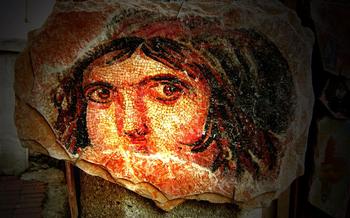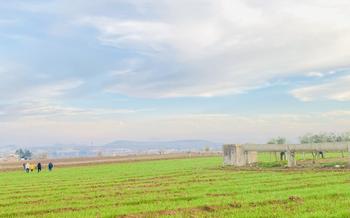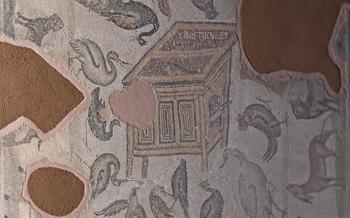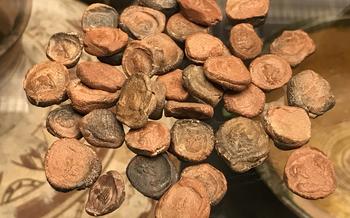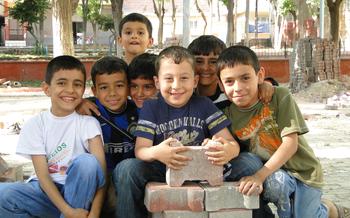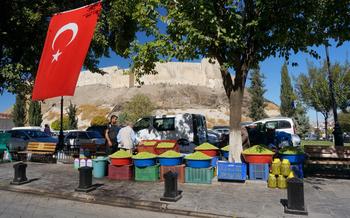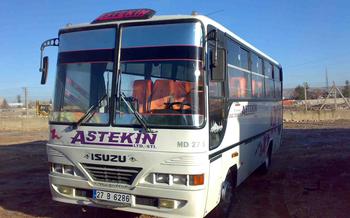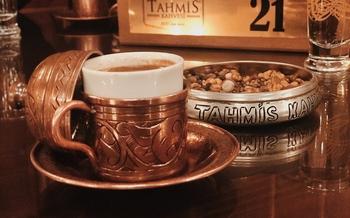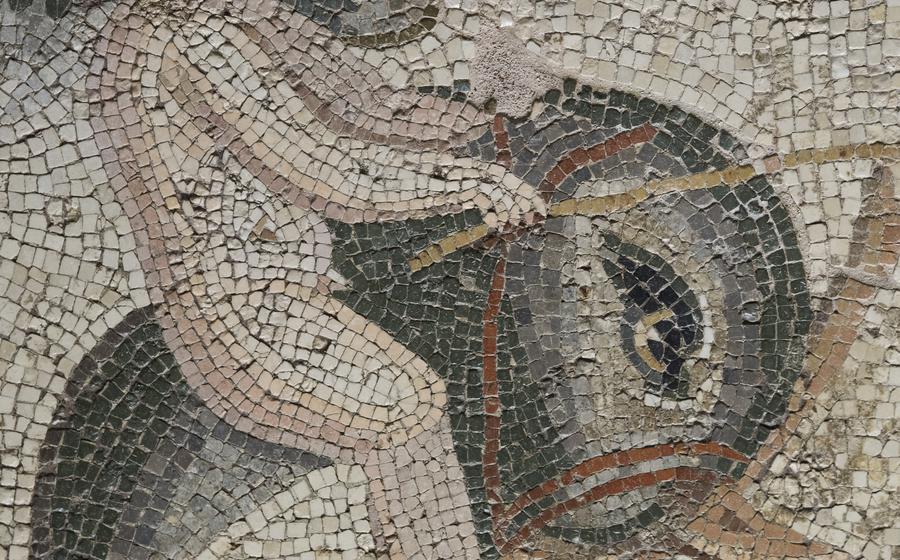
Zeugma Mosaic Museum
- Unveiling Zeugma Mosaic Museum: Gaziantep's Cultural Jewel
- A Journey Through Time: The Museum's History
- Awe-Inspiring Mosaics: A Visual Feast
- The Famous "Gypsy Girl": An Iconic Masterpiece
- Themes and Symbolism in the Mosaics
- Interactive Displays and Multimedia Presentations
- The Zeugma Excavation Site: A Glimpse into the Past
- Accessibility and Facilities for Visitors
- Photography and Social Media: Sharing the Beauty
- Guided Tours: Unveiling Hidden Treasures
- Souvenirs and Mementos: A Piece of History
- Location and Transportation: Easy Access
- Insider Tip: Explore the Local Cuisine
Unveiling Zeugma Mosaic Museum: Gaziantep's Cultural Jewel
Nestled in the heart of Gaziantep, Turkey, lies a treasure trove of ancient art and history—the Zeugma Mosaic Museum. Established in 2011, this world-renowned museum houses an awe-inspiring collection of Roman mosaics, unearthed from the ancient city of Zeugma. The museum stands as a testament to the region's rich cultural heritage and offers visitors a unique glimpse into the artistry, craftsmanship, and storytelling of the ancient world.
The Zeugma Mosaics, dating back to the 2nd and 3rd centuries AD, are considered masterpieces of Roman art. These intricate and vividly colored mosaics depict mythological scenes, everyday life, and historical events, providing a fascinating window into the lives and beliefs of the ancient Romans. The museum's collection includes the world-famous "Gypsy Girl" mosaic, an iconic symbol of Gaziantep and a testament to the skill and artistry of ancient mosaicists.
Beyond its aesthetic beauty, the Zeugma Mosaics hold immense historical significance. They offer valuable insights into the cultural exchange and influences that shaped the Roman Empire. The mosaics reveal the blending of Greek, Roman, and Eastern artistic traditions, showcasing the cosmopolitan nature of Zeugma, an important city on the ancient trade route known as the Silk Road.
The Zeugma Mosaic Museum is not just a repository of ancient artifacts; it is an active center for cultural preservation and education. Through its interactive displays, multimedia presentations, and educational programs, the museum engages visitors of all ages, fostering an appreciation for history, art, and cultural heritage.
A Journey Through Time: The Museum's History
The Zeugma Mosaic Museum stands as a testament to the rich history and cultural heritage of Gaziantep. Its journey began in the 1990s during the construction of the Birecik Dam, which threatened to submerge the ancient city of Zeugma beneath its reservoir. In a remarkable rescue operation, a team of archaeologists and experts embarked on extensive excavations to salvage the city's priceless treasures.
Under the leadership of Professor Fahri Işık, the excavations unearthed a wealth of stunning mosaics that adorned the floors of Zeugma's once-grand villas and public buildings. These intricate artworks, depicting mythological scenes, everyday life, and historical events, provided a glimpse into the vibrant culture of this ancient Roman city.
Recognizing the significance of these discoveries, the Turkish government, in collaboration with international institutions, established the Zeugma Mosaic Museum in 20This state-of-the-art facility was designed to house, preserve, and showcase the magnificent mosaics, ensuring their accessibility to visitors from around the world.
The museum's establishment marked a pivotal moment in the preservation of Turkey's cultural heritage. It not only saved these priceless artifacts from destruction but also transformed Gaziantep into a major cultural destination, attracting visitors eager to witness the splendor of the Zeugma mosaics firsthand.
Awe-Inspiring Mosaics: A Visual Feast
The Zeugma Mosaic Museum houses a breathtaking collection of Roman mosaics, renowned for their exquisite craftsmanship and intricate designs. These mesmerizing artworks depict a variety of subjects, from mythological scenes to everyday life, offering a glimpse into the artistic and cultural heritage of the ancient world.
The mosaics at the Zeugma Mosaic Museum are not just visually stunning but also historically significant. They represent the largest collection of Roman mosaics in the world, providing valuable insights into the artistic and cultural achievements of the Roman Empire. The intricate details and vibrant colors of these mosaics have captivated visitors from around the globe, making them one of the museum's most popular attractions.
One of the highlights of the museum's collection is the "Gypsy Girl" mosaic, a life-size portrait of a young woman with piercing eyes and an enigmatic smile. This exquisitely crafted mosaic is considered a masterpiece of Roman art and has become an iconic symbol of Gaziantep and Turkish culture. The beauty and artistry of the "Gypsy Girl" mosaic have earned it international recognition and acclaim, making it one of the most beloved and photographed artworks in the museum.
The Famous "Gypsy Girl": An Iconic Masterpiece
Discovered during the excavations in 1995, the "Gypsy Girl" mosaic instantly captivated the world with her mesmerizing beauty and enigmatic allure. The mosaic depicts a young woman with dark, piercing eyes, adorned with intricate jewelry and a vibrant headscarf. Her enigmatic smile and graceful pose have earned her the title of the "Mona Lisa of Zeugma."
The Gypsy Girl is renowned for her exceptional craftsmanship, with each tessera (small tile) meticulously placed to create a lifelike and expressive image. The mosaic's vibrant colors and intricate details have been exceptionally well-preserved, allowing visitors to marvel at the artistic prowess of ancient Roman artisans.
Beyond her aesthetic beauty, the Gypsy Girl holds cultural significance as a symbol of Gaziantep and Turkish culture. She represents the region's rich history, cultural diversity, and the enduring legacy of ancient civilizations. The mosaic has become an emblem of Turkish pride and is widely recognized as a masterpiece of Roman art.
The international acclaim and recognition received by the Gypsy Girl have cemented her status as a global icon. Her image has been featured in numerous publications, exhibitions, and documentaries, captivating audiences worldwide. The Gypsy Girl stands as a testament to the enduring power of art to transcend time and cultures, inspiring awe and admiration in all who behold her.
Themes and Symbolism in the Mosaics
The Zeugma mosaics are not just visually stunning; they are also rich in symbolism and hidden meanings. The ancient artisans who created these masterpieces used allegory and symbolism to convey complex ideas and narratives. Depictions of mythological scenes, nature, and everyday life often carry deeper meanings and messages.
For example, the mosaic of "Achilles and the Daughters of Lycomedes" explores the theme of disguise and deception. Achilles, disguised as a woman, hides among the daughters of King Lycomedes to avoid being sent to the Trojan War. The mosaic captures the moment of revelation as Achilles is discovered by Odysseus.
Another mosaic, titled "The Four Seasons," symbolizes the cyclical nature of life and the changing seasons. Each season is represented by a different god or goddess, surrounded by appropriate symbols and imagery. Spring is depicted by the goddess Flora, adorned with flowers and greenery. Summer is represented by the god Dionysus, holding a bunch of grapes and surrounded by vines. Autumn is symbolized by the goddess Ceres, carrying a basket of fruits. Winter is represented by the god Janus, who is shown with two faces, looking both forward and backward.
The Zeugma mosaics offer a glimpse into the beliefs and values of the ancient Romans. They provide valuable insights into the mythology, religion, and daily life of this fascinating civilization. By exploring the symbolism and hidden meanings within the mosaics, visitors can gain a deeper understanding of the ancient world and its cultural significance.
Interactive Displays and Multimedia Presentations
The Zeugma Mosaic Museum offers a diverse range of interactive displays and multimedia presentations that enhance the visitor experience. These interactive elements bring the ancient mosaics to life, providing a deeper understanding of their historical significance and cultural context.
Virtual reality tours transport visitors back in time, allowing them to immerse themselves in the vibrant world of ancient Zeugma. These immersive experiences offer a unique perspective on the city's architecture, daily life, and the creation of the magnificent mosaics.
3D models provide a detailed and interactive exploration of the mosaics. Visitors can rotate and zoom in on the intricate designs, revealing hidden details and appreciating the craftsmanship of the ancient artisans.
Interactive touchscreens and information kiosks offer a wealth of information about the mosaics, their history, and the ongoing research surrounding them. These interactive displays allow visitors to explore specific themes, learn about the symbolism and iconography, and delve into the lives of the people who created and admired these masterpieces.
Multi-language audio guides are available for visitors to enhance their understanding of the museum's collection. These guides provide detailed commentary on the mosaics, offering insights into their historical context, cultural significance, and the stories they depict.
The Zeugma Excavation Site: A Glimpse into the Past
The Zeugma Mosaic Museum is not only home to a stunning collection of mosaics, but it also offers visitors the chance to explore the nearby Zeugma excavation site, providing a glimpse into the ancient city that once stood here. Guided tours are available, taking visitors through the ruins and explaining the historical context of the site. Unearthed artifacts and remnants of ancient structures offer a tangible connection to the past, allowing visitors to imagine the bustling streets and vibrant life of Zeugma in its heyday. The excavation site serves as a valuable complement to the museum, enriching the visitor experience and providing a deeper understanding of the region's rich cultural heritage.
Accessibility and Facilities for Visitors
The Zeugma Mosaic Museum is committed to providing a welcoming and accessible experience for all visitors. Wheelchair accessibility and ramps ensure that visitors with mobility challenges can navigate the museum with ease. The galleries are well-lit, and the walkways are wide, allowing for comfortable movement. Lockers and storage facilities are available for visitors to store their belongings securely while exploring the museum. Rest areas and seating are located throughout the museum, providing opportunities to relax and take a break from the captivating exhibits.
Photography and Social Media: Sharing the Beauty
The Zeugma Mosaic Museum encourages visitors to capture the stunning beauty of the mosaics through photography and share their experiences on social media. Photography is allowed inside the museum, but the use of flash and tripods is prohibited to preserve the integrity of the mosaics. Visitors are encouraged to share their photos and videos online using hashtags such as #ZeugmaMosaics, #Gaziantep, and #Turkey. The museum's social media presence provides an interactive platform for visitors to engage with the museum and share their unique perspectives. By sharing their experiences, visitors become ambassadors of the museum, promoting its cultural significance and encouraging others to explore this hidden gem of Turkey.
Guided Tours: Unveiling Hidden Treasures
Enhance your visit to the Zeugma Mosaic Museum by availing the services of a professional guide. These knowledgeable experts provide in-depth insights into the history, significance, and symbolism of the mosaics. They can tailor tours to specific interests, whether it's mythology, art history, or cultural influences. Advance booking is recommended to secure your preferred time and language. Guided tours offer a personalized experience, allowing you to uncover hidden treasures and gain a deeper appreciation for the museum's masterpieces.
Souvenirs and Mementos: A Piece of History
The Zeugma Mosaic Museum offers a unique opportunity to take home a piece of history through its on-site museum shop. Here, visitors can find a carefully curated selection of souvenirs and mementos that celebrate the museum's collection and the rich cultural heritage of Gaziantep.
From exquisite replica mosaics to beautifully illustrated books and postcards, the museum shop offers a variety of items that allow visitors to remember and share their experience. Visitors can also find traditional Turkish handicrafts and local products, providing a chance to support local artisans and take a piece of Gaziantep's vibrant culture back home.
Proceeds from the museum shop contribute to the preservation and promotion of the museum's collection, ensuring that future generations can continue to marvel at the beauty and significance of the Zeugma mosaics. Whether it's a miniature replica of the famous "Gypsy Girl" or a book showcasing the museum's highlights, each souvenir carries a piece of Zeugma's story.
Location and Transportation: Easy Access
The Zeugma Mosaic Museum is strategically located in the heart of Gaziantep, a city renowned for its rich history, culture, and cuisine. This convenient location places the museum within easy reach of other popular tourist attractions and landmarks, making it an ideal starting point for exploring the city's many treasures.
Transportation to and from the museum is a breeze, with a range of public transportation options available. Visitors can hop on a bus or tram and get off at the Zeugma Museum stop, which is just a short walk from the entrance. For those who prefer the convenience of driving, there are ample parking facilities in the vicinity.
The museum's central location also makes it accessible to visitors from different parts of Turkey and the world. Gaziantep is well-connected by air, with regular flights from major cities in Turkey and beyond. The city is also a popular destination for road trips, with well-maintained highways leading to and from Gaziantep.
Whether you choose to explore the city on foot, by public transportation, or by car, the Zeugma Mosaic Museum is effortlessly accessible, ensuring a hassle-free and enjoyable visit.
Insider Tip: Explore the Local Cuisine
Gaziantep is renowned for its rich culinary heritage, offering a tantalizing array of dishes that will delight your taste buds. After immersing yourself in the history and art of the Zeugma Mosaic Museum, take a culinary journey to savor the authentic flavors of this vibrant city.
Indulge in the delectable beyran, a hearty lamb stew served with rice and a spicy sauce, or savor the unique katmer, a flaky pastry filled with cheese and pistachio. For a sweet treat, try the baklava, a layered filo pastry dessert drizzled with syrup and filled with nuts.
Venture into the local restaurants and eateries near the museum to experience the warmth of Turkish hospitality and immerse yourself in the local culinary scene. Don't miss the opportunity to sample the city's famous lahmacun, a thin, crispy flatbread topped with minced meat and vegetables, or the yuvalama, a comforting soup made with meatballs, chickpeas, and yogurt.
Gaziantep's cuisine is a testament to the city's rich cultural heritage and diverse influences. Every bite offers a taste of history and tradition, creating a memorable gastronomic experience that perfectly complements your visit to the Zeugma Mosaic Museum.
